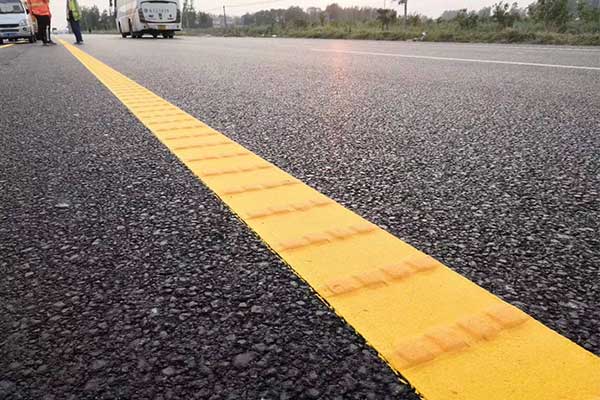How Thermoplastic Paint Contributes to Road Safety
Road safety is a critical concern for governments, transportation authorities, and drivers alike. One of the most effective ways to enhance road safety is through clear, durable, and highly visible road markings. Among the various materials used for road marking, thermoplastic paint stands out as a reliable and long-lasting solution. In this article, we explore how thermoplastic paint contributes to safer roads for everyone.

What is Thermoplastic Paint?
Thermoplastic paint is a type of road marking material made from synthetic resin mixed with pigments, glass beads, and fillers. Unlike regular paint, it is heated to a molten state before application, which allows it to form a thick, highly visible coating on road surfaces. Once cooled, it becomes a hard, durable layer that can withstand heavy traffic and harsh weather conditions.
Using a thermoplastic road marking machine ensures precise and efficient application of the paint, producing consistent lines, arrows, and symbols that meet road safety standards.
Key Safety Benefits of Thermoplastic Road Markings
1. High Visibility
Thermoplastic paint is designed to be highly reflective, especially when combined with glass beads. Tools like a retroreflectometer can measure the reflective performance of road markings to ensure they meet safety standards. Improved visibility helps drivers maintain proper lane discipline and reduces the risk of accidents, particularly at night or in adverse weather conditions.
2. Long-Lasting Durability
Compared to conventional road paint, thermoplastic markings have a much longer lifespan. They resist wear and tear caused by heavy traffic, UV exposure, and extreme temperatures. Durable markings ensure that drivers can consistently rely on road guidance, minimizing confusion and accidents.
3. Enhanced Skid Resistance
Some thermoplastic formulations include anti-skid aggregates, which increase traction at intersections, pedestrian crossings, and curves. Enhanced skid resistance helps prevent vehicles from slipping, especially during wet or icy conditions, thereby reducing accident rates.
4. Clear Lane Separation and Traffic Guidance
Thermoplastic paint is ideal for creating crisp lane lines, crosswalks, stop lines, and directional arrows. Using a road marking machine ensures these markings are applied accurately and uniformly. Clear and well-defined markings guide drivers efficiently, reducing lane departures, wrong-way driving, and other traffic violations that often lead to accidents.
5. Environmentally Friendly Options
Modern thermoplastic paints can be made with eco-friendly resins and pigments. These formulations minimize harmful emissions during application and reduce environmental impact without compromising road safety.
Applications of Thermoplastic Paint in Road Safety
- Highways and Expressways: Durable lane markings withstand heavy traffic and high speeds.
- Urban Roads: Clear pedestrian crossings and lane separation improve city traffic safety.
- Parking Lots: Defined parking lines reduce collisions in confined spaces.
- Industrial Sites: Long-lasting markings guide vehicles in busy warehouse and factory areas.
Conclusion
Thermoplastic paint is more than just a road marking solution—it is a vital tool for enhancing road safety. Its superior visibility, durability, and skid-resistant properties make roads safer for drivers, cyclists, and pedestrians alike. Using a thermoplastic road marking machine ensures precise application, while a retroreflectometer helps verify reflectivity for maximum safety.
For transportation authorities and construction companies, investing in thermoplastic road markings is a cost-effective and long-term strategy to reduce accidents and improve overall traffic management.

